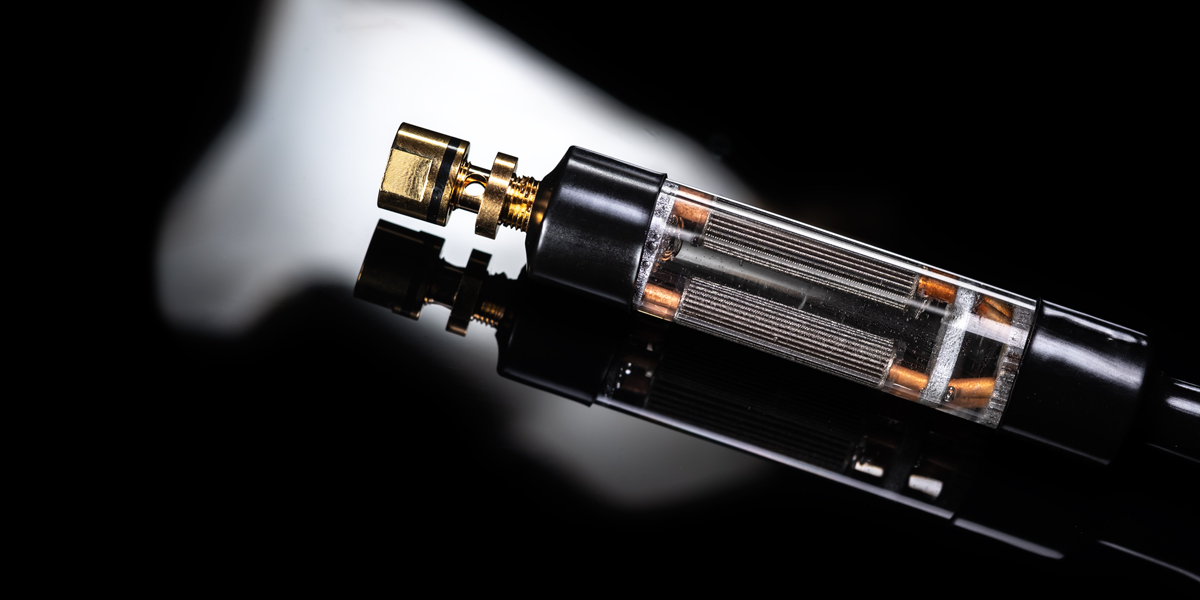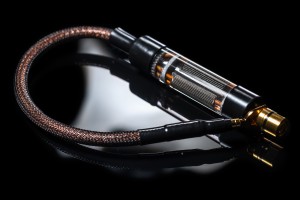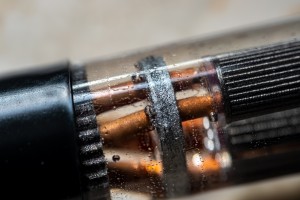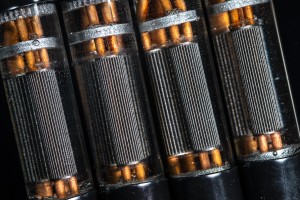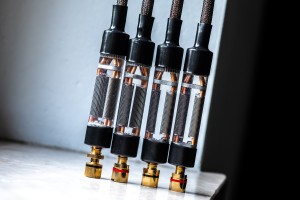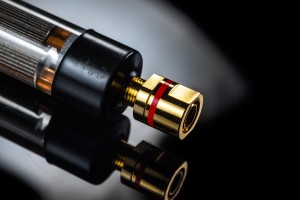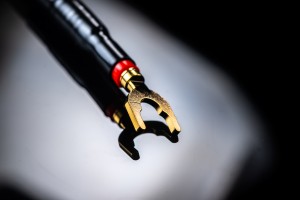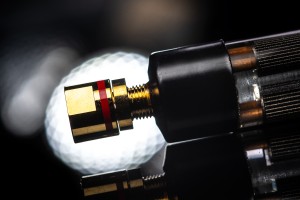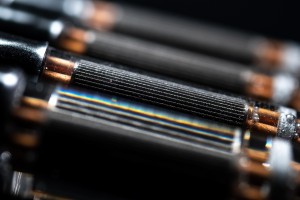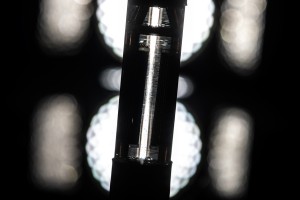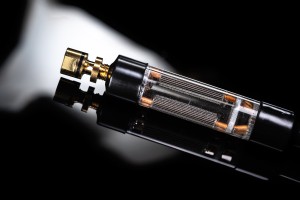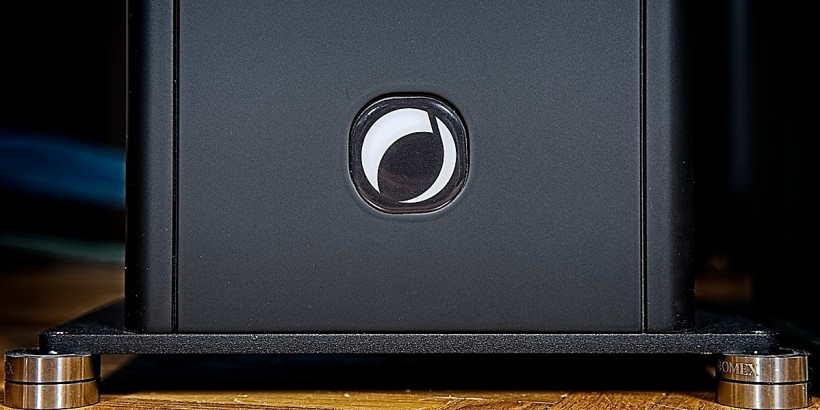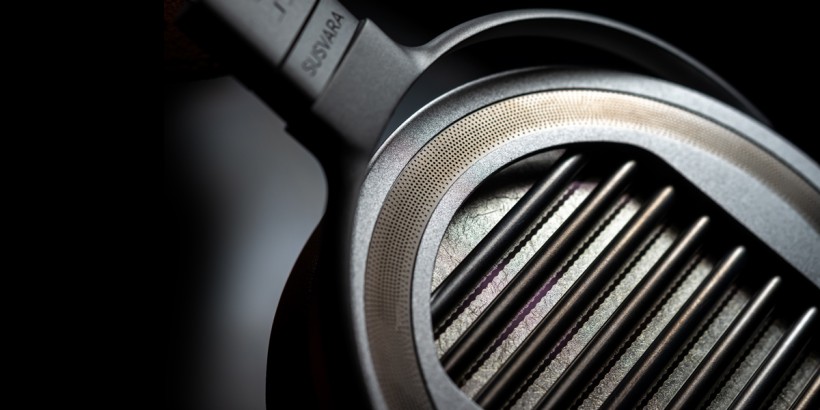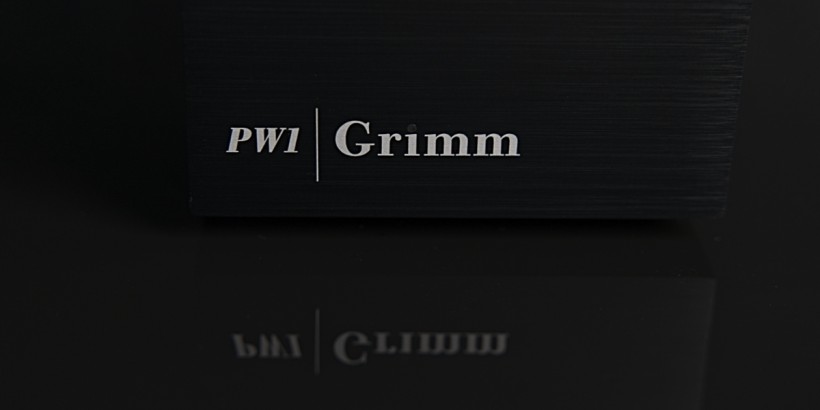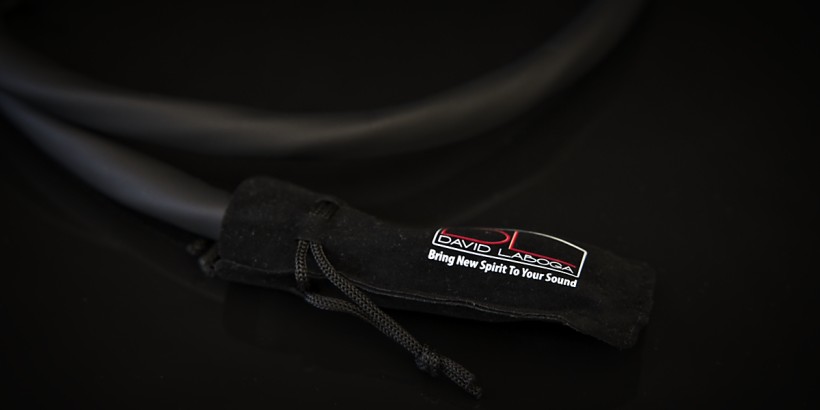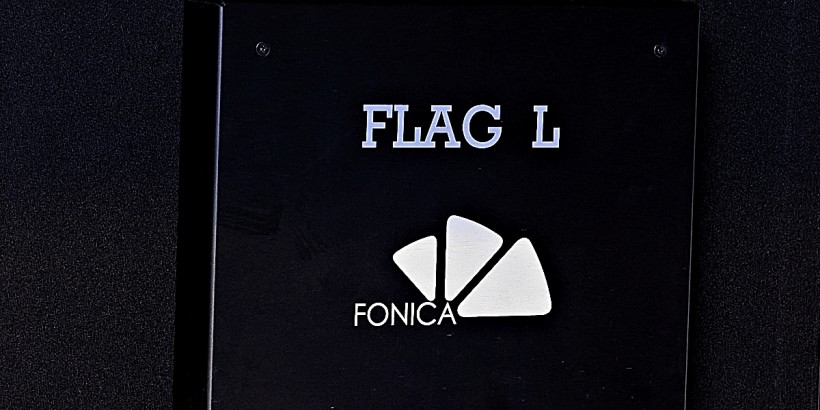I’ve been using LessLoss Firewall for Loudspeakers signal conditioners for nearly five years. I also consider them as one of the very best designs of this Lithuanian audio house. Their recently released higher-tiered version – LessLoss Stellar Firewall for Loudspeakers – instantly got my attention. Enjoy!
Nomex
The older we get, the wiser, more aware and mindful we become. Along the way also rises the level of confidence we have in our own cognitive abilities. Despite that, at some point comes the understanding of how little do we really know, and how truly few are our past experiences. To some of us this is a nice motivator to step outside our own comfort zone and venture even deeper into the unknown, no matter how intimidating it may seem. Others will prefer staying in their safe comfy bubbles. Personal choices and all that jazz, I’m not here to judge. However, if I, as a reviewer, were to do only the latter, about a third of this site’s content wouldn’t be published. Being curious, keen to sample even the most far out stuff the industry has to offer, see what it does for me and report is all a part of the job description. By doing it full time, I also learned that many conceptually radical externally inconspicuous designs often pack very large surprises. This is why I’m on very good terms with accessories.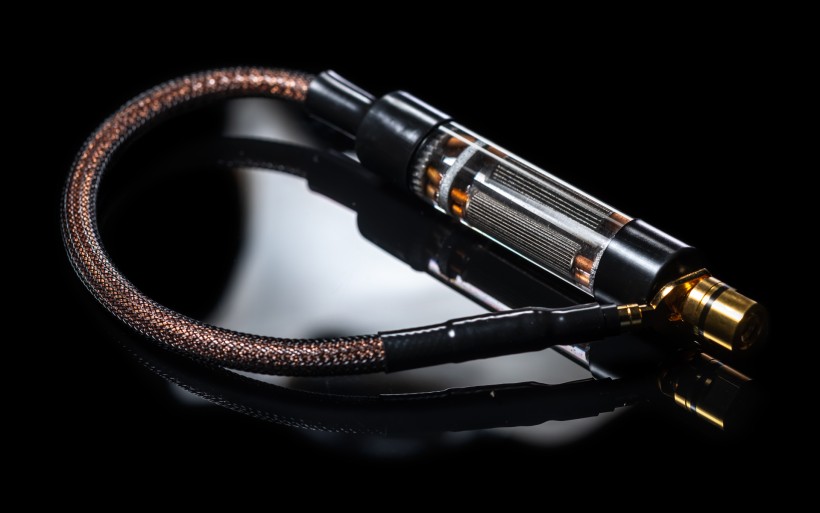 I imagine that a fifteen years younger version of me would’ve been amused by my recent accessory reviews. This is because the younger less experienced me didn’t yet understand that context is king in case of such expenses, and how many levels there are to this hobby. Now, after sampling a €35’000 power cord, €3’500 footers, €20’000 outlet multiplier and so on so forth, well, that guy simply knows more about what’s attainable. As for the contextual part, this honestly is no rocket science. My advice to those fully satisfied with their budget audio systems is to spend money on music not hardware. Should they at some point develop the upgrade itch, there’s no shortage of affordable tweaks to try out and see whether they make a difference or not. Worst case scenario, refunds apply. That seems a far smarter play that listening to forum know-it-alls, who’re stuck in the ridicule mode and won’t ever bother walking that walk.
I imagine that a fifteen years younger version of me would’ve been amused by my recent accessory reviews. This is because the younger less experienced me didn’t yet understand that context is king in case of such expenses, and how many levels there are to this hobby. Now, after sampling a €35’000 power cord, €3’500 footers, €20’000 outlet multiplier and so on so forth, well, that guy simply knows more about what’s attainable. As for the contextual part, this honestly is no rocket science. My advice to those fully satisfied with their budget audio systems is to spend money on music not hardware. Should they at some point develop the upgrade itch, there’s no shortage of affordable tweaks to try out and see whether they make a difference or not. Worst case scenario, refunds apply. That seems a far smarter play that listening to forum know-it-alls, who’re stuck in the ridicule mode and won’t ever bother walking that walk.
The perspective of a financially capable audiophile interested in upscaling his already luxurious audio system is vastly different. While a €35’000 power cord is pure insanity to most people and rightfully so, systems built upon the key components priced at €150’000 each or more make it a no-brainer expense if a noticeable performance hike follows. Contexts matter. My three-piece analog end currently sells for about €69’000 or so. To enjoy a significant sound quality boost without changing my speakers or room, or just detouring to different sound aesthetics, I’d have to spend roughly twice as much. Instead of forking out that kind of coin, I prefer chasing tweaks which support what I already own at a significantly lower cost and just the right dosage of progress where it matters. That’s not the best part. If I were now to transition from my current system to one comprised of a brand new DAC, amp and speakers, all these inherently universal accessories would tag along and call it a new home. Once they’re sorted to your liking, they’ll easily outlast any big kit and happily serve for years to come, which is a massive boon all by itself.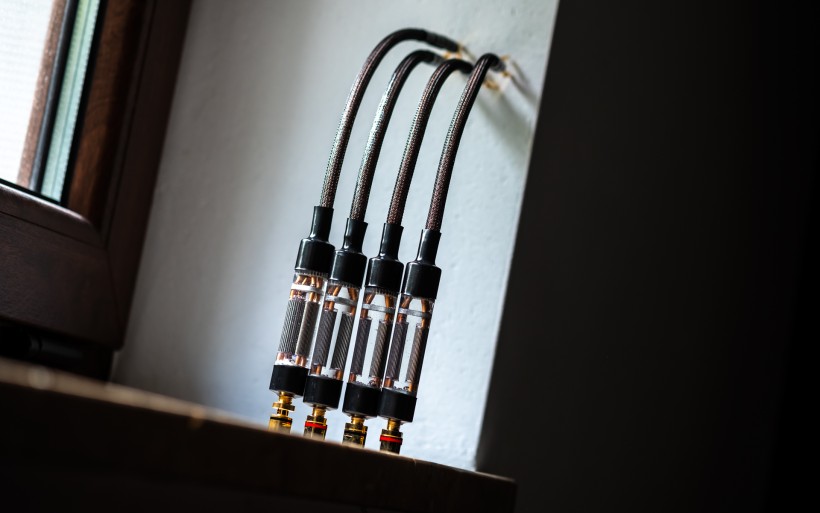 As packed with all sorts of different products and enormously large as it is, the audio accessory group is easy to explain. Everything that’s not your audio system’s main component falls into this category. As far as my rig is concerned, the Innuos Statement server/streamer, AMR-DP777SE DAC, Trilogy 915R/995R pre/amp, sound|kaos Vox 3afw monitors and Boenicke W11 SE+ floorstanders are essentials that create the sound I fully enjoy. The nearby rack, network switch, linear PSU, ground noise trap, power distributors, cables and anti-vibration footers support this sonic profile, in the sense that it is much better with them than without. While some of the listed accessories do more than others, they all contribute in a way that my ears easily register. Most were also designed to occupy a specific place within that platform, but some boast broader application. LessLoss Firewall signal cleansers are a notable example.
As packed with all sorts of different products and enormously large as it is, the audio accessory group is easy to explain. Everything that’s not your audio system’s main component falls into this category. As far as my rig is concerned, the Innuos Statement server/streamer, AMR-DP777SE DAC, Trilogy 915R/995R pre/amp, sound|kaos Vox 3afw monitors and Boenicke W11 SE+ floorstanders are essentials that create the sound I fully enjoy. The nearby rack, network switch, linear PSU, ground noise trap, power distributors, cables and anti-vibration footers support this sonic profile, in the sense that it is much better with them than without. While some of the listed accessories do more than others, they all contribute in a way that my ears easily register. Most were also designed to occupy a specific place within that platform, but some boast broader application. LessLoss Firewall signal cleansers are a notable example.
To recap, LessLoss Firewall for Loudspeakers is a specialist fully passive filtering device that strips contamination from signal going through it. It works without caps and coils and packs inside a small module that connects either to the binding posts on your speakers, which will see it only as 16mm2 of highly conductive solid-core copper and that’s it. This cross-sectional area is substantial enough to not have any impact on signal flow, resistance or the connected load’s impedance. Not only this, Firewalls also work their magic inside i.e. power distributors and speaker crossovers. The efficacy of these compact units compounds, which is why both speaker sets and power outlets at my disposal embed them inside. Atop that I also always use one external plug ‘n’ play Firewall set for the speaker set I currently listen to.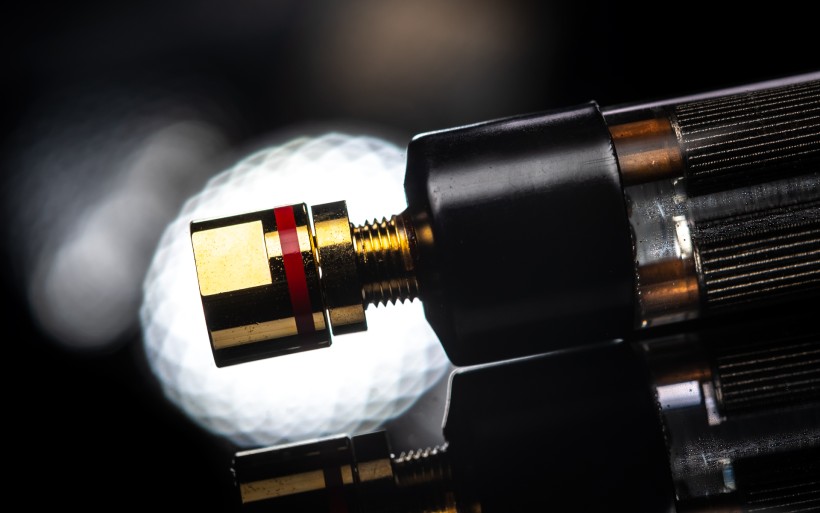 Should you wonder how the Firewall technology works, this quote comes in handy: “Four copper rods inside each Firewall’s translucent resin body undergo the company’s in-house developed Entropic processing, which drastically ages these parts and results in their unique matte look. This treatment also changes the conductor’s internal structure, so it becomes directional and far less susceptible to micro-vibrations thus quieter. That’s not the best part. Entropy stands for gradual decline into unavoidable decay. This copper gains new properties at a cost of becoming so old that it can too easily deform. Think far more than a human’s lifetime of constant usage, but compressed into several days of extensive processing, which makes conductive rods highly pliable if unsupported. The crystalline resin cylinders lock these delicate bits in place, so that their integrity remains intact and the entire module becomes robust. Each copper rod pair is surrounded by the crucial finned parts, which are the latest LessLoss Firewall incarnates. This in-house developed noise-killing technology underwent many iterations over the years. Now it incorporates the DMLS (Direct Metal Laser Sintering) processing and high-powered ytterbium fiber lasers, which allow for welding alloy powder into required 3D objects from particles as small as 10 nanometers. The finned cylinders aren’t physically connected with copper conductors inside them. Their interaction however involves magnetic fields and that’s all we know. The rest is LessLoss’ sweet secret. This also tells us that these ingredients have to align perfectly to maximize the noise-trimming effect, otherwise this fundamental goal is compromised.”
Should you wonder how the Firewall technology works, this quote comes in handy: “Four copper rods inside each Firewall’s translucent resin body undergo the company’s in-house developed Entropic processing, which drastically ages these parts and results in their unique matte look. This treatment also changes the conductor’s internal structure, so it becomes directional and far less susceptible to micro-vibrations thus quieter. That’s not the best part. Entropy stands for gradual decline into unavoidable decay. This copper gains new properties at a cost of becoming so old that it can too easily deform. Think far more than a human’s lifetime of constant usage, but compressed into several days of extensive processing, which makes conductive rods highly pliable if unsupported. The crystalline resin cylinders lock these delicate bits in place, so that their integrity remains intact and the entire module becomes robust. Each copper rod pair is surrounded by the crucial finned parts, which are the latest LessLoss Firewall incarnates. This in-house developed noise-killing technology underwent many iterations over the years. Now it incorporates the DMLS (Direct Metal Laser Sintering) processing and high-powered ytterbium fiber lasers, which allow for welding alloy powder into required 3D objects from particles as small as 10 nanometers. The finned cylinders aren’t physically connected with copper conductors inside them. Their interaction however involves magnetic fields and that’s all we know. The rest is LessLoss’ sweet secret. This also tells us that these ingredients have to align perfectly to maximize the noise-trimming effect, otherwise this fundamental goal is compromised.”
While the cylindrical part of each loudspeaker Firewall is its core ingredient, the attached flexible pigtail built upon the company’s own Common-Mode Auto-Rejecting Cable aka C-MARC is no less important. This specialist wiring comprises a unique geometry based on two counter-polarized, then fractally replicated coils of the same diameter and step; one turned clockwise and the other twisted in the opposite direction. They superimpose mutually to form a bucking-coil connection originally developed in the 1930s. Noise induced on hundreds of these balanced strands is electrically cancelled due to their opposite polarity and geometry, which results in high S/N ratio. I’ve found C-MARCs terrific for the price, which is why all RCAs, XLRs, power cords and speaker veins in my system are built upon them. The C-MARC technology noticeably progressed since its debut in 2017. About four years ago team LessLoss have found a way how to apply to it their drastic aging method named Entropic processing yet kept it optional. Upon order paying customers decide whether their LessLoss cable of choice should be the standard C-MARC, or its costlier Entropic-processed version. While they’re alike on looks and sonic profile, the latter does audibly more as I’ve explained here.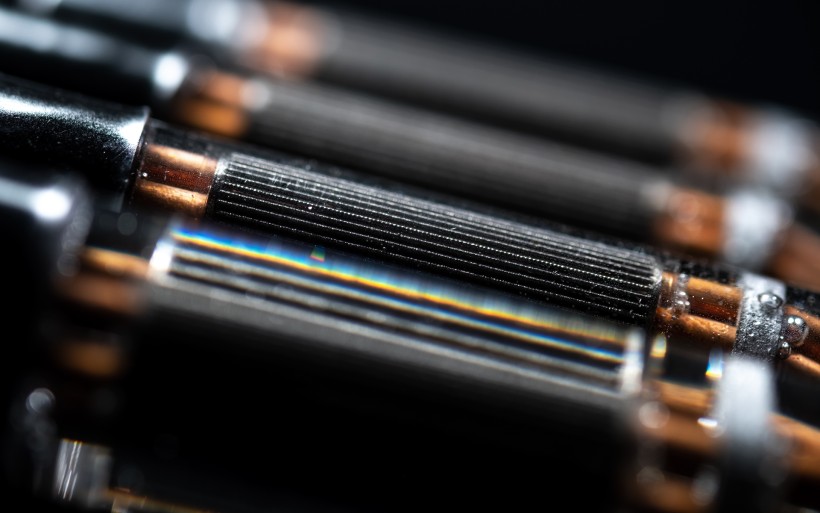 The second and latest upgrade of the C-MARC tech took the form of its higher-tiered Stellar version that thus far was available only in LessLoss power cords. The previous-gen power C-MARC, now known as Classic, packs 384 tiny copper hairs of 4.7mm2 conductive cross-section area per one leg. The Stellar ramps these numbers up to 576 and 7.06mm2 respectively. It also undergoes the manufacturer’s signature aging processing that’s twice as long. The increase in the Stellar’s conductive area in comparison to the Classic means two things. One, it lowers the impedance thus lessens the resistance for signal to flow. Two, the increased number of its conductive Litz wires in the C-MARC configuration means higher noise suppression. The more of these mutually superimposed oppositely polarized runs there are, the higher its efficacy. Upon comparing the Classic C-MARC to its Stellar sibling half a year ago and telling that story here, the latter proved noticeably better.
The second and latest upgrade of the C-MARC tech took the form of its higher-tiered Stellar version that thus far was available only in LessLoss power cords. The previous-gen power C-MARC, now known as Classic, packs 384 tiny copper hairs of 4.7mm2 conductive cross-section area per one leg. The Stellar ramps these numbers up to 576 and 7.06mm2 respectively. It also undergoes the manufacturer’s signature aging processing that’s twice as long. The increase in the Stellar’s conductive area in comparison to the Classic means two things. One, it lowers the impedance thus lessens the resistance for signal to flow. Two, the increased number of its conductive Litz wires in the C-MARC configuration means higher noise suppression. The more of these mutually superimposed oppositely polarized runs there are, the higher its efficacy. Upon comparing the Classic C-MARC to its Stellar sibling half a year ago and telling that story here, the latter proved noticeably better.
The external loudspeaker Firewall set that I’ve been using for more than four years features the Classic non-Entropic C-MARC pigtail, which serves two purposes. One, it is the cylinder’s physical extension that makes the entire structure easy to use. Two, it transfers signal from this barrel to the speakers. LessLoss have found a way to improve this route by replacing the critical cable with its noticeably stiffer and a touch thicker Stellar version as explained above. That’s in today’s name already. The main question to ask is whether this one change makes an ounce of a difference. I have my theory why it might. This short noise-rejecting cable is the very last stop before speakers take over. As such it must pass the signal shaped inside the key Firewall bits ideally without any losses and intact. I was about to find out whether it does and is worth the extra $692 per set. The previous-gen loudspeaker Firewall wants $1’656/4. The newcomer Stellar sells for $2’348/4. Available terminations include gold-plated polished spades or BFAs. Threaded heads with caps on the cylinder ends accept everything including bare wire. I didn’t have to do much to compare the Stellar quad to the OG loudspeaker Firewalls. Both sets terminated with spades were connected to the speakers at the same time, but only one was used of course. After each back and forth I had to manually move my speaker cables conveniently finished with BFAs from one Firewall to the other. That was quick and straightforward. I had no reasons to complain.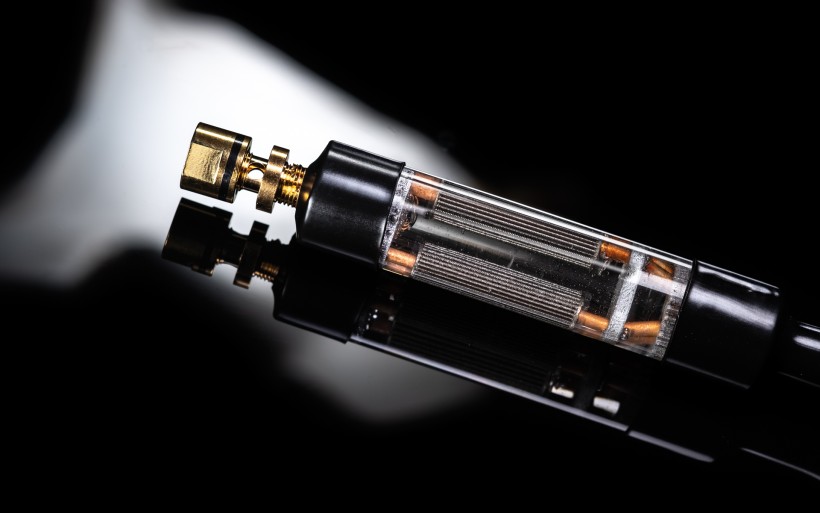 Let’s start with what I think about the original loudspeaker Firewalls: “Not only do I deem Firewalls very useful with all kinds of speakers, I haven’t yet encountered one that wouldn’t audibly benefit from such assistance. The purist rear horn-loaded wideband breed is known for its direct quicksilvery aroma as much as somewhat shouty lean attitude that can also be shy on bass. To offset that, a suitable amp companion is a must. More importantly, these crossoverless loads are inherently highly revealing, in the sense that they track and magnify even tiniest changes in our setups more clearly than most regular two- or three-ways. Ever since the Firewalls’ arrival in early 2020 I had the pleasure of guesting five wideband specimens. Each was very fond of these accessories, which is hardly a surprise considering their easily traceable input. Rounder and fleshier vocals, wider color palette, increased fullness, longer decay and weight upstairs, higher clarity and lesser shout, edginess and grit are the benefits most widebander aficionados would appreciate and enjoy. All things considered, I can’t fault speaker Firewalls for anything in particular where it counts. In my book, these devices are free from any sonic downsides and really child’s play to use.”
Let’s start with what I think about the original loudspeaker Firewalls: “Not only do I deem Firewalls very useful with all kinds of speakers, I haven’t yet encountered one that wouldn’t audibly benefit from such assistance. The purist rear horn-loaded wideband breed is known for its direct quicksilvery aroma as much as somewhat shouty lean attitude that can also be shy on bass. To offset that, a suitable amp companion is a must. More importantly, these crossoverless loads are inherently highly revealing, in the sense that they track and magnify even tiniest changes in our setups more clearly than most regular two- or three-ways. Ever since the Firewalls’ arrival in early 2020 I had the pleasure of guesting five wideband specimens. Each was very fond of these accessories, which is hardly a surprise considering their easily traceable input. Rounder and fleshier vocals, wider color palette, increased fullness, longer decay and weight upstairs, higher clarity and lesser shout, edginess and grit are the benefits most widebander aficionados would appreciate and enjoy. All things considered, I can’t fault speaker Firewalls for anything in particular where it counts. In my book, these devices are free from any sonic downsides and really child’s play to use.”
The next chapter reads as follows: “This is also the very reason why in my system I see LessLoss Firewalls for speakers as necessities rather than accessories. Their work may seem mild at first, but disengaging them after a week or two of constant use is plainly painful. Then it hits us how much these small barrels actually contribute, or rather how much is lost upon taking them away. It seems fitting to call them highly advanced inline filters, but not necessarily accurate. Here Srajan already pointed out that Firewalls condition signal to reveal information previously held hostage by residual noise. Their additive work is thus opposite to subtractive filtering. Since I fully agree, in my own review I wrote that Firewalls don’t add anything audible to a system’s voicing that is not already there in the first place. These aren’t tools meant to alter its core flavor. Instead they show how it fares without the well-known byproducts of noise; harshness, sharpness, leanness and grit. This is why listeners who use a Firewall product in their setups for the first time may find the outcome somewhat more sensual, polite and mild early on. In reality it’s not. Bass stripped from noise develops extra heft and fullness alright, but also becomes tighter and more powerful, so the opposite of what its earlier character would suggest. Instrumental outlines presented on a blacker backdrop may imply less overall radiance and clarity, while audibly more pronounced, weightier and longer in brilliance, contradicts this theory. More articulated and nuanced yet denser vocal lines don’t fully describe it either. The entire musical image grows larger and more robust, while edginess that causes listening fatigue vanishes.”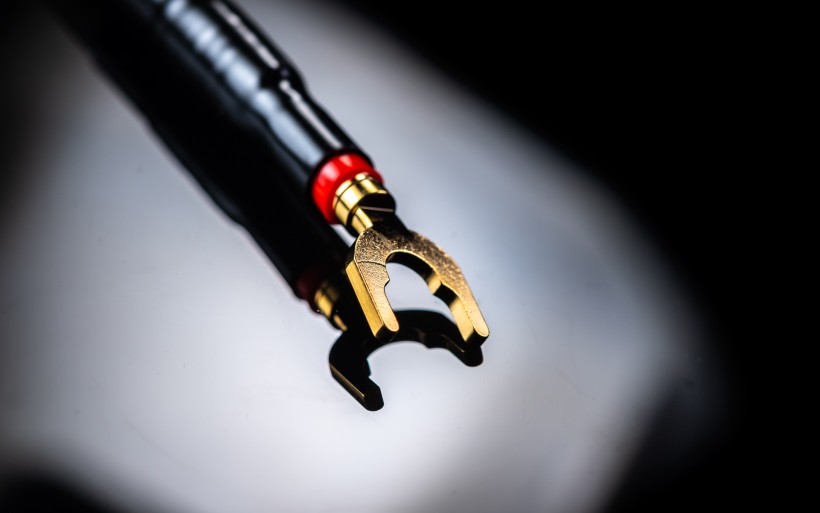 With the standard Firewall out of the way, let’s now move to the Stellar C-MARC power cord. When compared to the Classic C-MARC and the Boenicke M2 cable built upon the same tech, it didn’t change my system’s overall profile. It wasn’t supposed to. The Stellar is a C-MARC after all and sounds like one. In its review I wrote that it was designed to do the manufacturer’s usual, but better and more of it. Should you wonder what that means, against the Boenicke M2 the Stellar was sensibly springier and juicier. It also produced bass that dug deeper and seemed a touch lighter yet felt more elastic, tighter, impactful and controlling in the process. More importantly, the newcomer C-MARC revealed the additional levels of saturation, vividness, color and tone, particularly apparent on minimalist music built upon a single vocal line and one instrument. While the Stellar was less surgical on such fare, it remained as precise and articulated, and had the upper hand on pigmentation. When this cord was on the job, voices felt more like breathing, moist, sensual, intimately close fleshy focal points than just outlines etched into the landscape. As a mix of tacitness, presence and intimacy, suchness was the key divider between the Stellar and Boenicke M2. Upon comparing the former cord to the Classic C-MARC, the differences as explained still applied and were well pronounced. That’s how in my roster the Stellar became its makers’ best cable effort to date and nothing has changed since then.
With the standard Firewall out of the way, let’s now move to the Stellar C-MARC power cord. When compared to the Classic C-MARC and the Boenicke M2 cable built upon the same tech, it didn’t change my system’s overall profile. It wasn’t supposed to. The Stellar is a C-MARC after all and sounds like one. In its review I wrote that it was designed to do the manufacturer’s usual, but better and more of it. Should you wonder what that means, against the Boenicke M2 the Stellar was sensibly springier and juicier. It also produced bass that dug deeper and seemed a touch lighter yet felt more elastic, tighter, impactful and controlling in the process. More importantly, the newcomer C-MARC revealed the additional levels of saturation, vividness, color and tone, particularly apparent on minimalist music built upon a single vocal line and one instrument. While the Stellar was less surgical on such fare, it remained as precise and articulated, and had the upper hand on pigmentation. When this cord was on the job, voices felt more like breathing, moist, sensual, intimately close fleshy focal points than just outlines etched into the landscape. As a mix of tacitness, presence and intimacy, suchness was the key divider between the Stellar and Boenicke M2. Upon comparing the former cord to the Classic C-MARC, the differences as explained still applied and were well pronounced. That’s how in my roster the Stellar became its makers’ best cable effort to date and nothing has changed since then.
With that lay of the land, I was keen to learn whether this latest C-MARC was able to elevate the already accomplished Firewall technology by a meaningful margin. I certainly hoped that it would. On the face of it, a short piece of cable shouldn’t make much of a difference, no? Then again, fourteen LessLoss stories under my belt are my reasons to give the company the benefit of the doubt instead of raising eyebrows. Now getting down to today’s meat and potatoes, it didn’t take long to understand that that Stellar Firewall’s existence had a solid foundation. That short pigtail changed more than I initially thought it would. The key differences between today’s arrival and its predecessor spanned from the former’s deeper reach and firmness, higher juiciness, greater textural provision, additional nimbleness and more nuanced general MO to the noticeable increase in clarity, more raw horsepower, contrast pop and dynamic span. Just to make it clear, behaviorally this still was a good ‘ol Firewall type. As far as sheer potency goes however, The Stellar’s core ingredient that does all the heavy lifting was clearly a souped-up engine. This essentially means that the change from the previous-gen Firewall to the newcomer is safe, in the sense that we’re getting the alike audible care package. There’s just more of it and bonuses apply.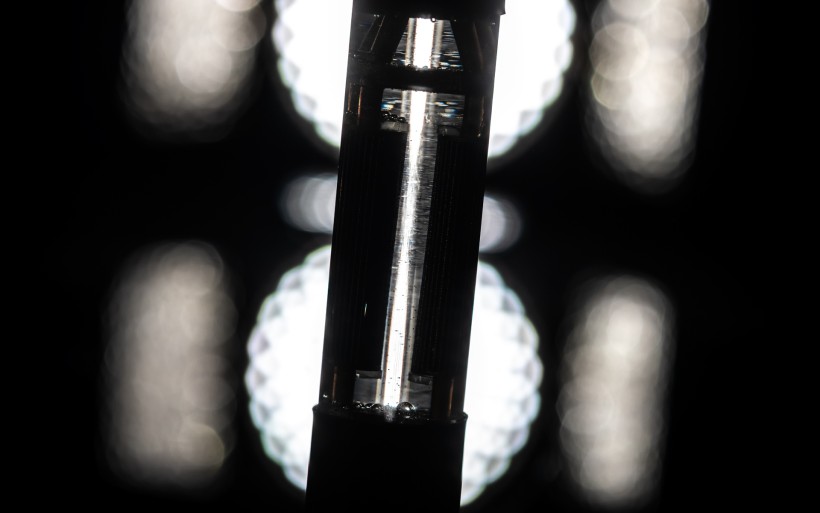 While I expected some gains on backdrop cleanliness as a function of additional noise removal atop all the perks associated with that beneficial utility, the Stellar Firewall had me fair bit surprised in the dynamic department. Several days into listening, this newfound muscularity, authority and snap reserve emerged as the design’s prime traits. As illuminated, open and dynamically keen as they are, both speaker sets at my disposal communicate even slight changes on these fronts particularly well. If I had mainstream loads mainly groomed for comfort and body, perhaps then the new Firewall’s capabilities related to color, tone and saturation would’ve come on top. As far as these assets go, it is just as gifted. That said, I didn’t mind its higher emphasis on might, control and the lot, quite the contrary. The more of that I get, the more alive music in my listening room becomes.
While I expected some gains on backdrop cleanliness as a function of additional noise removal atop all the perks associated with that beneficial utility, the Stellar Firewall had me fair bit surprised in the dynamic department. Several days into listening, this newfound muscularity, authority and snap reserve emerged as the design’s prime traits. As illuminated, open and dynamically keen as they are, both speaker sets at my disposal communicate even slight changes on these fronts particularly well. If I had mainstream loads mainly groomed for comfort and body, perhaps then the new Firewall’s capabilities related to color, tone and saturation would’ve come on top. As far as these assets go, it is just as gifted. That said, I didn’t mind its higher emphasis on might, control and the lot, quite the contrary. The more of that I get, the more alive music in my listening room becomes.
In my roster the original loudspeaker Firewall has the position of a nifty little efficacious thing that I wholeheartedly recommend to everyone. Considering what it does and how, it is affordable and works equally well with all kinds of speakers. It goes about its business so well that financing it shortly after speakers is an elegantly small cost-efficient route to instantly upgrade them. While today’s Stellar Firewall follows suit, it offers a sensibly larger performance hike and parks a nice dynamic twist on top, which I think justifies its position in the LessLoss roster and the extra expense. Enthusiasts already accustomed to the Firewall kind may agree. Meanwhile, high-eff speaker fans not yet familiar with this LessLoss tech but intrigued by today’s Stellar may find its input very surprising and quite possibly also freakishly large. Just saying…
Associated Equipment:
- Amplifier: Trilogy 995R, FirstWatt F7, Enleum AMP-23R
- DAC: AMR DP-777SE
- Speakers: Boenicke Audio W11 SE+, sound|kaos Vox 3afw
- Transport: Innuos Statement, fidata HFAS1-S10U
- Preamplifier: Trilogy 915R, Thöress DFP
- Speaker cables: Boenicke Audio S3, LessLoss C-MARC
- Headphones: HifiMan Susvara
- Speaker signal conditioning: LessLoss Firewall for Loudspeakers, Boenicke ComDev
- Anti-vibration conditioning: 6x Carbide Base Diamond (under speakers), 6x Carbide Base Micro Diamond with TwinDamp inserts and spikes (under DAC and pre)
- Interconnects: LessLoss Entropic Process C-MARC, Boenicke Audio IC3 CG
- Power components: Gigawatt PC-3 SE EVO+/LC-3 EVO, LessLoss C-MARC, LessLoss Entropic Process C-MARC, Boenicke Audio Power Gate, ISOL-8 Prometheus
- USB components: iFi audio Mercury3.0
- Rack: Franc Audio Accesories Wood Block Rack 1+3
- Network: Fidelizer EtherStream, Linksys WRT160N
- Music: NativeDSD
Retail prices of reviewed components in EU (incl. VAT):
- LessLoss Stellar Firewall for Loudspeakers: $2’348/set of 4
Manufacturer: LessLoss


